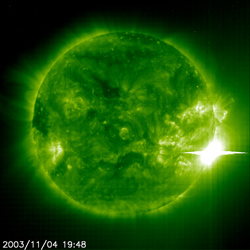The fact that you have not seen us, is enough to claim: nobody is attempting to detect us and others are not looking at all - we can stay at plain sight (claim with standard 99.999999% certainty). This is due to human selective attention, it is easy to give them something else to observe. If you want to know what that something should be in any given time, just ask this from Swarm intelligence.
Off earth
Spaceships engine room and outer shell is covered with several insulating layers of übervantablack, each absorbing standard 99.999999% electromagnetic radiation. Spaceship lacks the need for power cables, as übervantablack is superconductor and lacks standard resistance. This also acts as electromagnetic panel that is immensely more efficient then solar panels.

On earth
Humans think they mainly detect air vibration whose frequency between 20 to 20,000 Hz and visible light spectrum within:
 but they can not differentiate subtle differences.
but they can not differentiate subtle differences.
However other primitive creatures on the planet have superior scenes, but as they can not communicate telepathically and share similar selective attention, they can be ignored.
Additionally
Humans are so ignorant that even if I tell you this, you doubt it. We actually keep several spaceship in most crowded of spaces where and they would still not notice it - even if they see it on a recorded medium like picture or video.
We can communicate telepathically and so can our computers - we can monitor what you think and change it at will, even if you detect us. For us it is as easy as saying : "you do not see me" to your subconscious and humans are too primitive to overwrite it and take it as their belief. Note however we do not do this manually, it is done by computers. It is sub system of Swarm intelligence and fully automatic in nature, but can be overridden by guardians.

They do not look nothing like silence (from Dr Who), but for some reason it is easiest reference humans usually understand.





